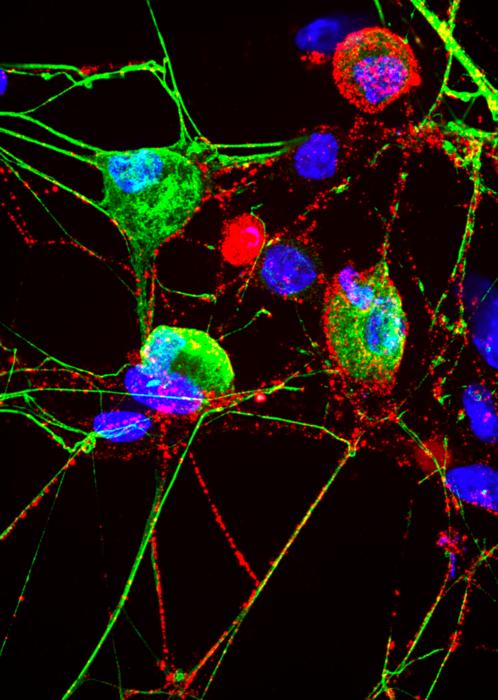Revolutionary Blood Test Offers Precise Alzheimer’s Diagnosis and Assesses Dementia Severity
A groundbreaking advancement in Alzheimer’s disease detection is making waves in the medical community, with researchers from Washington University School of Medicine in St. Louis and Lund University in Sweden announcing the development of a blood test that not only diagnoses Alzheimer’s but also stages its progression. This study, published in the esteemed journal Nature […]


A groundbreaking advancement in Alzheimer’s disease detection is making waves in the medical community, with researchers from Washington University School of Medicine in St. Louis and Lund University in Sweden announcing the development of a blood test that not only diagnoses Alzheimer’s but also stages its progression. This study, published in the esteemed journal Nature Medicine, represents a significant advancement in our ability to identify the severity of this neurodegenerative disorder through a relatively non-invasive method: a simple blood draw.
For decades, the diagnosis of Alzheimer’s has been a challenging endeavor, particularly because the symptoms, such as cognitive decline and memory impairment, can stem from various causes. Existing blood tests have primarily focused on detecting the presence of Alzheimer’s-related proteins, such as amyloid beta, which accumulates in plaques in the brain. However, the key innovation from this research lies in its ability to measure the levels of a specific tau protein, known as MTBR-tau243. The ability to determine how far Alzheimer’s disease has progressed using this biomarker could profoundly influence treatment decisions.
The study reveals that MTBR-tau243 levels in the bloodstream hold a direct correlation with the accumulation of toxic tau aggregates in the brain, providing a clear picture not only of whether an individual has Alzheimer’s but also of the disease’s stage. This relationship is vital since current Alzheimer’s therapies prove most effective at the early stages of the disease. Understanding a patient’s degree of impairment is essential for physicians to tailor treatments accordingly, ensuring that individuals receive the most appropriate therapeutic options based on their specific needs.
Additionally, the researchers highlighted that elevated blood levels of MTBR-tau243 distinguished between individuals with mild cognitive impairment due to Alzheimer’s disease and those experiencing full-blown dementia, thus confirming its utility as both a diagnostic and a staging tool. Unlike previously available blood tests, which were primarily diagnostic, this novel test could also serve as a prognostic tool, opening avenues for personalized treatment strategies.
The technology and methodologies used in this study evolved from work that has been in progress for several years, wherein researchers have investigated the linking of tau levels in cerebrospinal fluid to tau tangles in the brain. Building on this foundation, the research team succeeded in developing techniques to analyze tau levels in peripheral blood, a major advancement considering that blood samples are significantly easier and less invasive to collect than cerebrospinal fluid, which requires a spinal tap.
In their investigation, the team tested blood samples from various cohorts, initially focusing on individuals with cognitive decline. This included 108 volunteers from WashU’s Charles F. and Joanne Knight Alzheimer Disease Research Center and 55 participants from the Swedish BioFINDER-2 cohort. Utilizing an independent dataset of 739 additional individuals helped further validate their findings.
The analysis concluded that the blood concentration of MTBR-tau243 could accurately reflect the density of tau tangles in the brain, achieving an impressive accuracy rate of 92%. Remarkably, this biomarker remained stable in cognitively healthy participants, indicating that MTBR-tau243 levels do not fluctuate until Alzheimer’s symptoms are present. Conversely, among those suffering from cognitive impairments attributed to Alzheimer’s, the protein levels exhibited significant elevation, providing a clear differentiation from individuals with cognitive issues stemming from other conditions.
Importantly, the implications of these findings extend beyond immediate diagnostics and staging. They could revolutionize the treatment landscape for Alzheimer’s disease by integrating an array of therapeutic options that are reflective of the disease state. As researchers work tirelessly on developing novel tau-targeting medications, the MTBR-tau243 blood test could play an integral role in identifying the best therapeutic approaches suited for each stage of the disease.
Personalized treatment regimens are also on the horizon, supported by this significant development in blood testing technology. With the FDA approving therapies targeting amyloid beta, ongoing research suggests that upcoming treatments may include those focusing on tau pathology. Once a standardized blood test for Alzheimer’s staging becomes available, healthcare providers will be empowered to devise tailored treatment plans aimed at addressing patients’ unique disease trajectories effectively.
As reported by Randall J. Bateman, MD, co-senior author of the study, the ability to more readily identify distinct aspects of Alzheimer’s pathology and apply this knowledge to clinical practice may greatly enhance patient care. The promise of SAT tests, such as those measuring MTBR-tau243, not only simplifies the complexities of diagnosis but could also refine the strategies employed by medical professionals treating Alzheimer’s disease.
In summary, the emergence of the MTBR-tau243 blood test represents a quintessential move towards a more accessible and accurate diagnostic and prognostic framework for Alzheimer’s disease. Continuous innovations within this realm promise not only to illuminate our understanding of Alzheimer’s pathology but also pave the way for enhanced personalized approaches to treatment, fundamentally shifting the future of care for patients experiencing this challenging neurodegenerative disorder.
Subject of Research: Alzheimer’s disease detection through blood testing
Article Title: Plasma MTBR-tau243 Identifies Tau Tangle Pathology in Alzheimer’s Disease
News Publication Date: March 31, 2025
Web References: Nature Medicine
References: Horie K, Salvadó G, etc. (2025). Plasma MTBR-tau243 identifies tau tangle pathology in Alzheimer’s disease. Nature Medicine.
Image Credits: Matt Miller
Keywords: Alzheimer’s disease, neurodegenerative disorders, blood biomarkers, tau proteins, medical diagnostics, personalized medicine.
Tags: Alzheimer’s disease diagnosisAlzheimer’s research breakthroughsamyloid beta protein detectionblood test for Alzheimer’scognitive decline evaluationdementia severity assessmentinnovative medical diagnosticsMTBR-tau243 biomarkerNature Medicine publicationneurodegenerative disorder detectionnon-invasive Alzheimer’s testingtau protein measurement
What's Your Reaction?

































